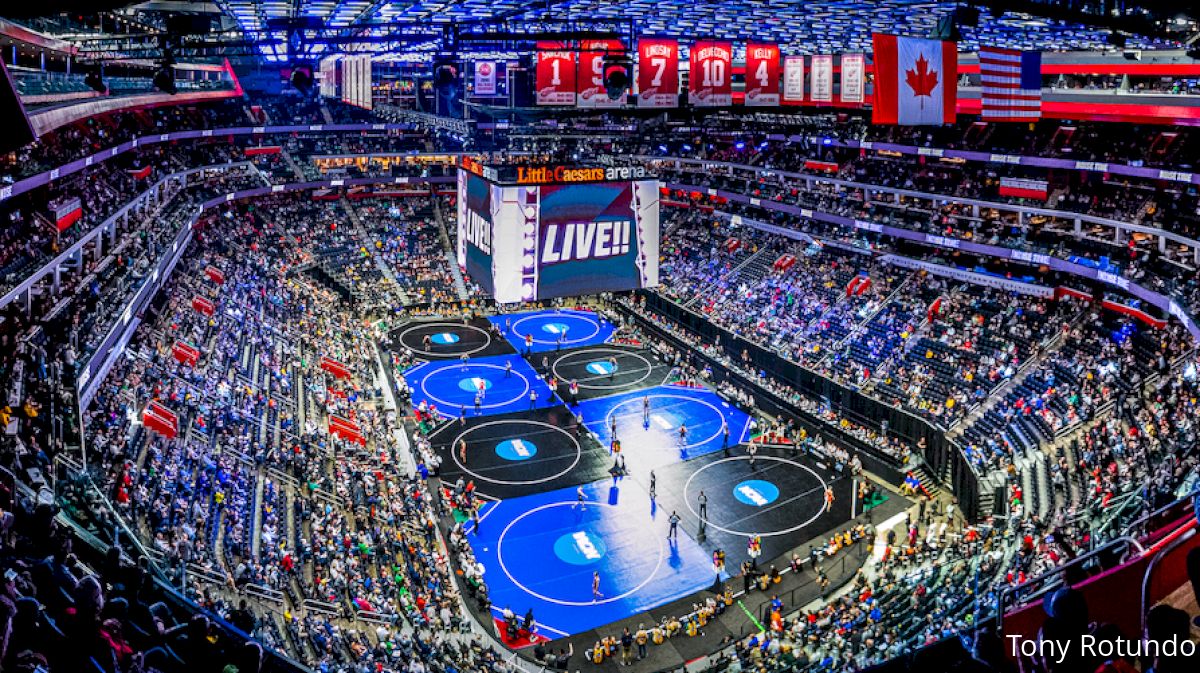How Will The House vs. NCAA Settlement Impact College Wrestling?
How Will The House vs. NCAA Settlement Impact College Wrestling?
A breakdown of the recent House vs. NCAA settlement and the potential impacts on college wrestling.

On Thursday, the NCAA and the five power conferences agreed to a settlement in three anti-trust lawsuits that could potentially shift the college athletics landscape forever. The settlement allows eligible athletes back-payment from 2016-2019, allows for universities to pay athletes directly, eliminates scholarship caps, and provides further regulation around NIL payment.
House vs. NCAA Settlement Explained
As mentioned above, several outcomes from the settlement will impact college athletics. However, four main areas of the settlement are worth explaining:
1. Back-Pay Damages
The NCAA and the Power 5 schools agreed to over $2.75 billion in back payments to eligible Division 1 college athletes from 2016 to 2019. This will be paid to individuals over the next 10 years for lost name, image and likeness (NIL) earning opportunities.
2. Future Revenue Sharing
Starting in the fall of 2025, schools in the Power 5 conferences can opt-in to paying student-athletes directly. While the specifics haven't been outlined, it's estimated that if schools opt-in to this, they would likely pay about $20 million/year directly to athletes. It also appears that schools could opt-in to revenue sharing and be selective in what sports programs they choose to pay. Again this isn't required and there are still questions surrounding the specifics of this aspect of the settlement.
3. Scholarship Cap Eliminated
In the current model, Division 1 sports have a capped amount of scholarships they are permitted to grant to athletes. Furthermore, the number of scholarships permitted varies from sport to sport. For instance, Division 1 football programs can grant up to 85 full scholarships while wrestling programs are limited to 9.9 full scholarships.
The settlement will eliminate NCAA scholarship caps and instead, roster-caps will be initiated. This hasn't been fully outlined but essentially athletic departments will have the freedom to grant as many scholarships as they desire but the roster size for each sport will likely be trimmed.
4. NIL Regulation
NIL changed the game over the past few years, but with revenue sharing and the athletic departments able to pay athletes directly, it appears the NCAA wants to bring higher regulations around how athletes are compensated for their name, image, and likeness. Like the other items in the settlement, this isn't fully defined, but according to reports, the NCAA wants to ensure that athletes enter into legitimate NIL deals rather than a "pay for play" agreement from school donors.
*It's worth noting that while the NCAA and Power 5 schools have agreed to the settlement, it still has to be approved by the judge. This is expected to happen in the next 30-45 days.
What Does The Settlement Mean For The Future Of College Wrestling?
It will be a year before we see many of the above items put into action. However, the potential changes are massive, and college wrestling will likely feel the impacts of this over the next 5-10 years. Before we know the full details, there are three main questions worth considering:
1. Are college wrestling programs in danger?
College wrestling is a non-revenue sport - which means that most programs do not generate revenue for their respective institutions. If a college chooses to opt-in to revenue sharing, the sports that will likely benefit are football and basketball. That means athletic departments could cut sports like wrestling to allocate those funds to compensate the revenue-generating programs. Whether that will happen or not is yet to be seen, however, it's clear Division 1 wrestling programs will have to advocate for themselves to their value to their respective institution and make potentially make programatic changes where necessary.
2. Will the biggest wrestling programs opt into revenue sharing?
If a Power 5 school does choose to opt in to the revenue-sharing model and wrestlers are included in the opt-in, this would change the landscape of college wrestling. Any program that pays wrestlers directly would immediately have a major advantage in recruiting. If this happens there are other questions surrounding paying wrestlers - How will contracts be determined? Will starters get paid more than non-starters? We don't have the answer to these questions yet but it's fascinating to think how this could impact college wrestling.
3. How will non-power schools compete with Power 5 schools?
There's always a chance this could only impact the major sports like basketball and football. However, wrestling programs from power schools like Penn State, Michigan, Iowa, and Oklahoma State have proven to take advantage of NIL more than non-power schools. With many of the above changes seemingly benefiting programs with greater resources, we could once again see the power programs with another advantage. Will this create a more uneven playing field? Will the talent disparity continue to grow between the "haves" and "have nots"? We don't know how all of this will impact the future of college wrestling but it seems that significant change is on the horizon.